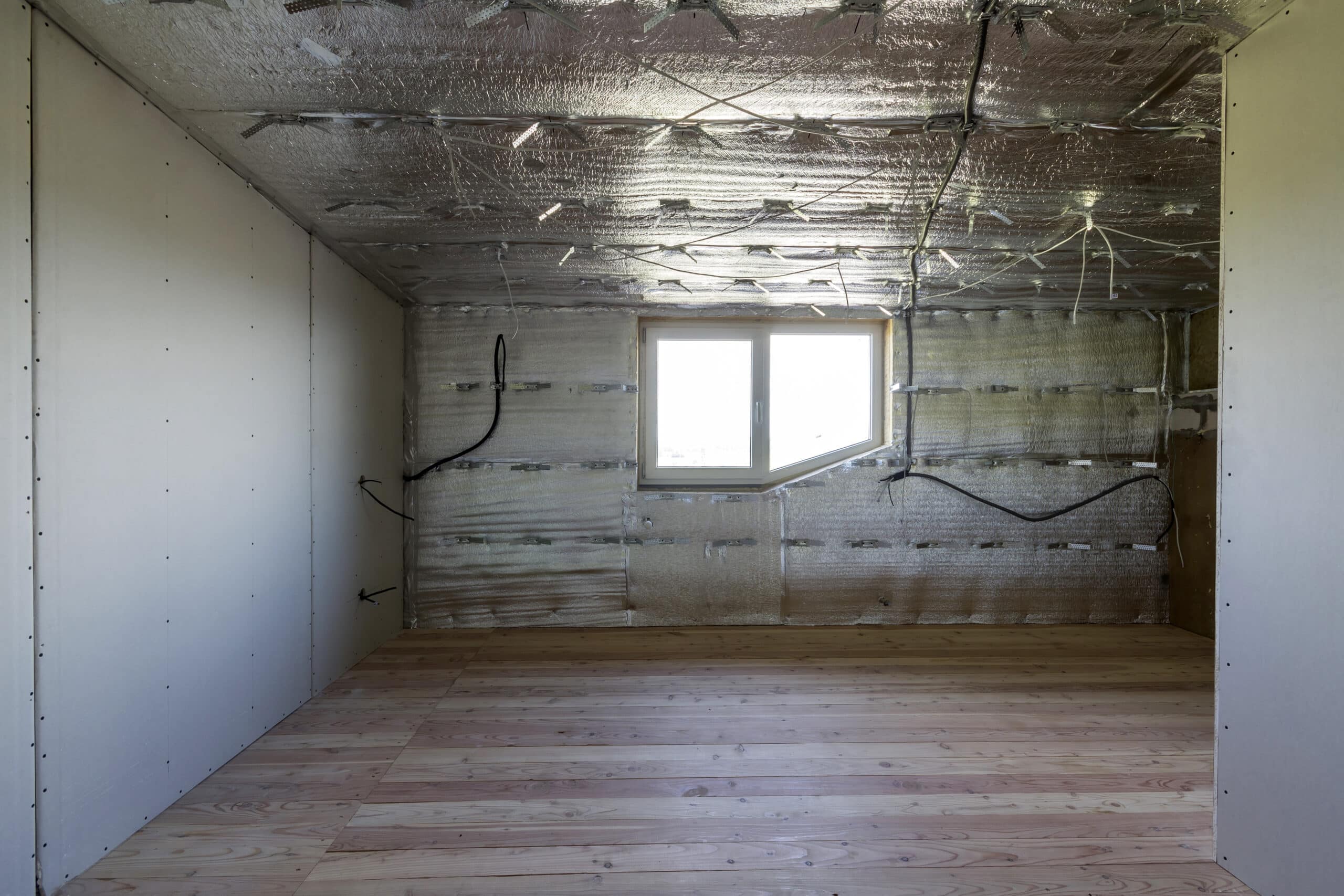A poorly insulated house will feel comfortable in warmer weather, but when winter temperatures arrive, it’s easy to notice your house doesn’t have adequate insulation. Poorly insulated homes can wreak havoc on your utility bills and HVAC system. You should know how to keep a poorly insulated house warm to stay healthy and comfortable during cold weather.
Proper insulation is instrumental in maintaining warmth year-round. Keep reading to learn about the signs you have poor insulation, tips to maintain whole-home heat in the winter, and get answers to the most common questions regarding a poorly insulated home.
Signs Your Home Is Under-Insulated
It can be challenging to determine whether you have inadequate insulation without looking at your attic or walls. Key locations are the basement, attic, and around doors. The most common signs of poor insulation in the house include drafts, high utility bills, insects and other pests, and uneven temperatures.
Drafts or Excessive Warmth: This symptom indicates improper insulation and poor seals around doors and windows.
Uneven Temperatures: A cold room in one part of the house and a warm room in the next indicate varying temperatures due to inadequacies and differences between each room’s insulation.
Increased Energy Bills: Less insulation means your HVAC system must work harder and longer. This performance increases energy bills despite little to no indoor comfort improvements.
Pests: Insects and Rodents entering your home signify damage like open seals and holes in walls.

Tips To Keep Poorly Insulated Houses Warm
Install Window Blinds
Blinds are one of the most practical options when considering how to keep a poorly insulated house warm. They create durable, eye-catching barriers between windows and your indoor space to retain temperatures and block UV rays. You can save money in the summer and winter by installing window blinds.
Use Heavy Curtains To Block Drafts
Decreasing temperatures bring cold drafts that leach warmth from your home. Insulated window treatments like curtains and drapes are available to trap further heat. Install thick window curtains but shut them as the sun sets to keep cold air away.
Draft-Proof Your Doors
Garage doors, pet doors, exterior doors, and interior doors contribute to heat loss in the home. Drafts from improper seals let cold air in at these spots.
Block the spaces under interior doors in your home with thick rugs or clothes. If a rug isn’t enough, door sweeps are another suitable option for blocking cold air and keeping in warm air. Do the same with garage doors and close pet doors after the sun sets to save energy.
Invest in a Quality HVAC System
A state-of-the-art heating and cooling system may be an expensive initial investment. However, it will pay for itself by saving you money for years to come. A heat pump offers heating and cooling power year-round at affordable costs. Consider a ductless system for additional temperature control.
Fix Your Boiler
Another way to keep a poorly insulated house warm is to upgrade or repair the boiler. If your budget allows it, a new boiler installation facilitates energy-efficient heating. You’ll save money in the long run with continued maintenance.
Block the Chimney Space
Closing the chimney flue is another way to keep an old, drafty house warm, so be sure to keep it closed when you’re not using your fireplace. Installing glass fireplace doors prevents hot air from exiting your home after the fire stops burning.
Keep Items Away From the Radiator
If your home uses a radiator, you should ensure that no furniture or other items are blocking the heat’s spread. Move furniture and potential obstructions away from the radiator to prevent an airflow disruption. Installing a shelf above the radiator can further disperse heat.
Increase Indoor Air Humidity
Humidifiers increase warmth in small or enclosed rooms. While not as effective as a heater, the additional moisture remains in the air while the door is closed and won’t increase your energy bills as much.
Install an Electric Floor Heater
Installing electric floor heating is another tip on how to keep a poorly insulated house warm. Floor heaters maintain heat across all rooms with a floor heating unit. You’ll get the best results with a professional installation, but it’s also possible to perform a DIY installation.
Roof Insulation
Another highly effective tip on how to prevent heat loss in a house is to increase insulation in your attic. Spray foam, fiberglass, and cellulose insulation are top options for trapping heat under your roof. With a professional insulation installation, you can trap heat more successfully.
Designate a Heating Room
You can use a terracotta pot with candles to create a heating room. Putting lit candles under a terracotta pot in the center of your room will eventually cause it to heat. Keep residual warmth in the room by ensuring all windows and doors have proper seals.
Frequently Asked Questions (FAQs) – Poorly Insulated Home
What happens if a Home is Poorly Insulated?
Heat and cold air easily escape your walls when a home is poorly insulated. Without ample insulation, you’ll reduce heat retention in the winter, and warm air will infiltrate the space in the summer. Poorly sealed windows and doors also contribute to this comfort loss.
How do you Insulate a Poorly Insulated House?
There are many techniques for how to keep a poorly insulated house warm. If you’re on a budget, consider a professional insulation installation to get the best job from trusted professionals.
Conclusion
Attic Projects is the local leader in treating home temperature unevenness. We provide individualized, high-quality insulation installation services. By following these energy-saving tips on how to keep a poorly insulated house warm, you can retain warmth in your home and keep your HVAC system from breaking down prematurely.
You don’t have to suffer from inadequate insulation levels. We provide accurate, expert information on maintaining your home’s temperature without enough insulation. Contact Attic Projects to schedule an appointment.



